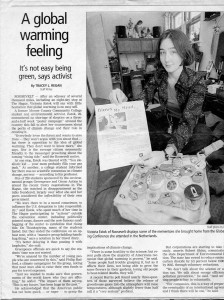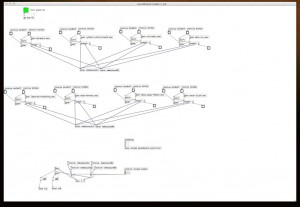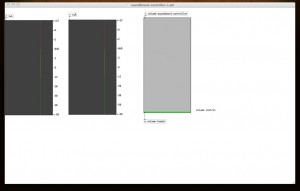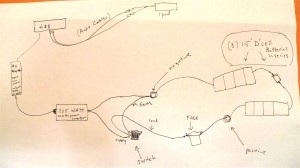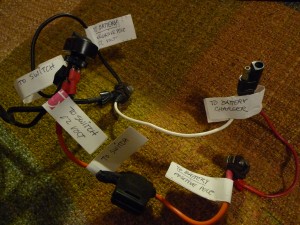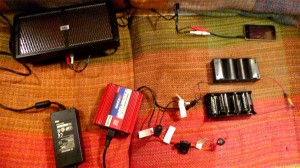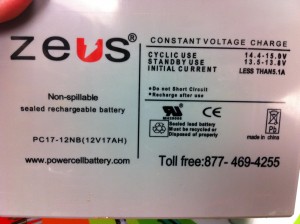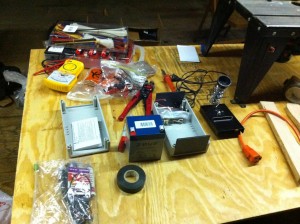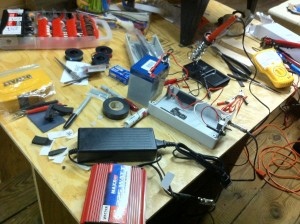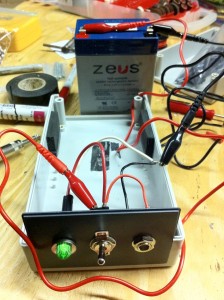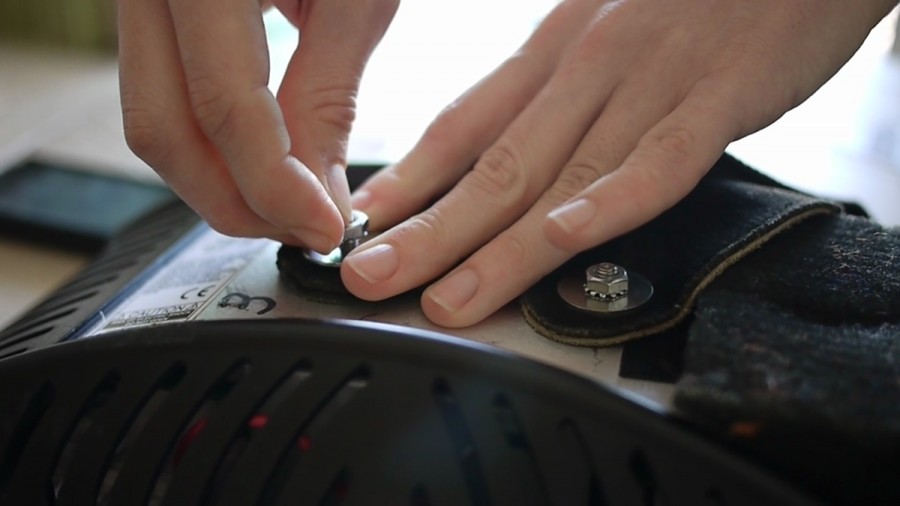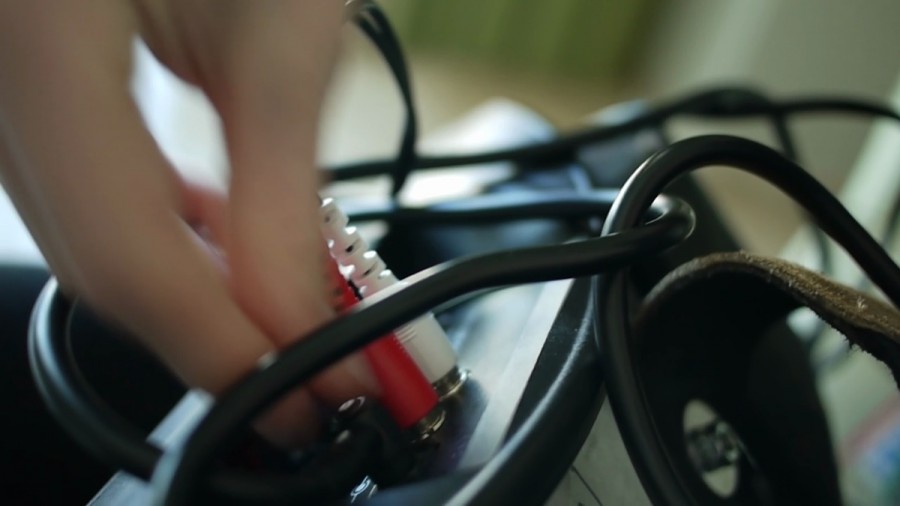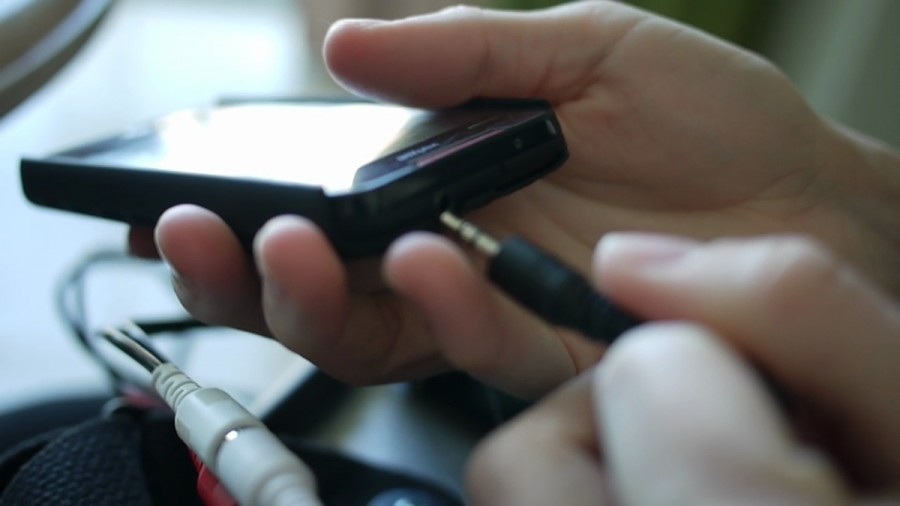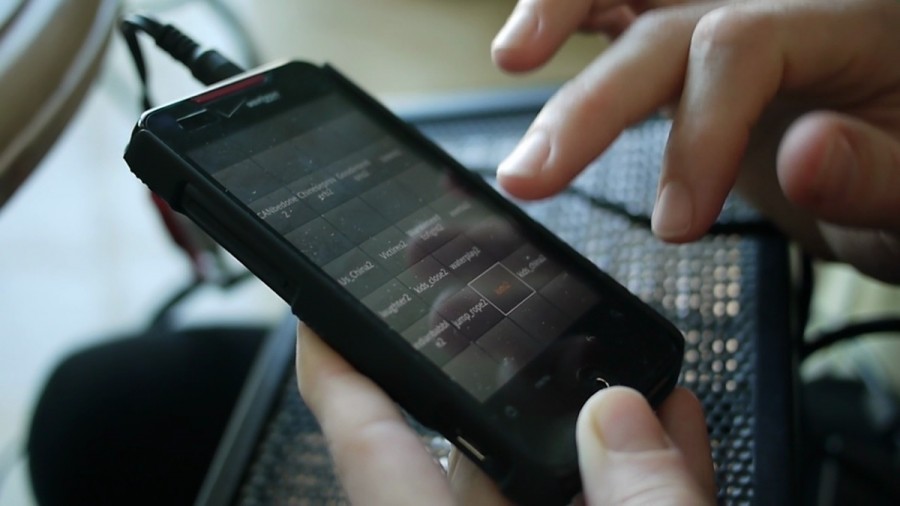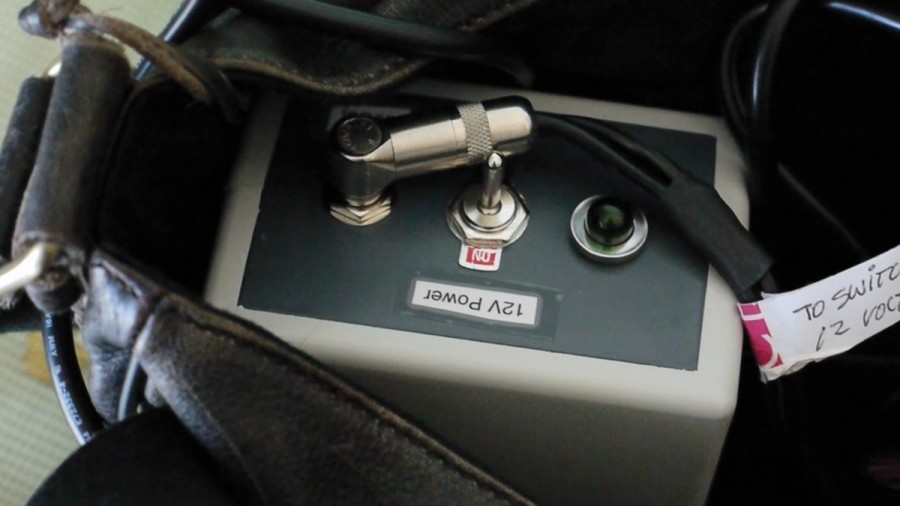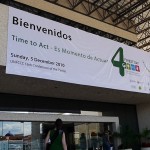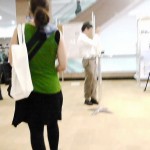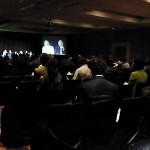Interpelled – Ongoing Research
Interpelled
I went to my first United Nations Conference on Climate Change in 2000 (COP6, Hague, NL) as part of a student climate summit sponsored by Greenpeace. I wasnʼt a student then, so instead of the regular campus organizing most students were doing, I designed and printed thousands of posters about the climate crisis and, at 22 years old, started on an individual cross-country poster posting campaign. My posters wound up in phone booths, truck stops, and bathrooms all over the US. This is when I latched onto the idea that messages could be most effective in unexpected situations and places. Interpelled takes this idea of encountering an unexpected message a step further.
I’ve always been haunted by that the much talked about “ten year window” has gone by without the US taking reasonable responsibility in the climate crisis. I made the trip to Cancun to attend my second COP conference (this time without organizational support or accreditation) to do an underground sound art project on that 10 year anniversary.
During the fall of 2010, I began my research, struggled unsuccessfully to secure an accreditation pass to COP16, and experimented with a hypersonic sound device. HSS (hypersonic sound) is a directional speaker (also known as a parametric speaker) that projects a narrow beam of sound. The individual within its narrow beam will likely be the only one to hear it and all other people nearby will not. I liken it to a “sound laser” I imagined that I could use this device to creative reflective psychological space through focused sound.
As a sound artist and environmental worker, I believe sound and voice can interrupt, influence, and ultimately intervene at key moments in ways other intervention art strategies can’t. In the context of COP16, I saw – and continue to see – this strategy as having lots potential and the possibilities to yield poignant and surprising reflections and hopefully, responses.
Comments (0) | Tags: Cancun Mexico, COP16, HSS, sound intervention
special thanks
to David Dunn, Gustavo Matamoros, Steve Lambert, Victoria Hindley, Christopher Van Donkelaar, NicolasDumit-Estevez, Dianne Smith, Jennifer Drinkwater, and Michael Zeltner … for their patience, generosity, warmth, and wit!
The seeds were planted 10 years ago …
In 2000, I attended COP6 (sixth round of negotiations for the Kyoto Protocol) with a group of students during summit sponsored by Greenpeace…
I decided to go on a cross country poster campaign in preparation for my trip. It was during this time the idea that conveying a message was most effective in a place where it was unexpected. My posters ended up in phone booths, truck stops, and bathrooms all over the US.
Before going to COP6 we read a lot of climate science literature that stated we had a ten year window to do something. Haunted by the fact that this ten year window is closing and driven by my interest in sound perception – I decided to take both passions a step further.
The project that I’m proposing would take this idea of finding yourself in a space where you are presented with an unexpected message a step further. Unlike posters which didn’t allow me to see people’s reactions, this project relies on direct one to one contact with the people. I imagine this message being heard as one’s own conscience. This can be achieved effectively by using a HHS hyper-sonic sound device by precisely projecting a narrow beam of recorded sound on the intended subject’s body.
Comments (0)
Research on HSS and Audio Spotlight
Due to the generousity of Gustavo Matamoros I was able to borrow a HSS device and see if it could really work in an underground sound intervention. This article gives a nice comparison of HSS and the Audio Spotlight. In the world of ultrasonic sound west-side Woody Norris (inventer of HSS) and east-coaster Joseph Pomei (audiospotlight) are presented almost as rivals. Before deciding to go with the HSS – I was also fortunate enough to be able to borrow an audio spot light for a short time. The Audio Spotlight definitely had a longer range but was awkward to hold (shaped like a very large flat plate) – it nearly projected sound halfway down the block. The HSS was more audibly more subtle especially with human voices but could be amplified to project a decent distance – as well. It all took some tinkering — I tested both speakers numerous times both indoors and outdoors finding that the HSS was more discreet – it could fit in my shoulder bag and was easily moveable once I attached a guitar strap to it!
These fact sheets do a good job at explaining technically how HSS works. Basically FM modulates with recorded sound – so that the two sounds mix acoustically at your ear …. in this way you hear the projected recorded sound in your head! While this all sounds very futuristic — this high frequency technology has been around since the 1960s — though not for commercial application. Like most technologies, a more powerful variation of this was originally developed by the military and more research in this area continues on a number of levels.
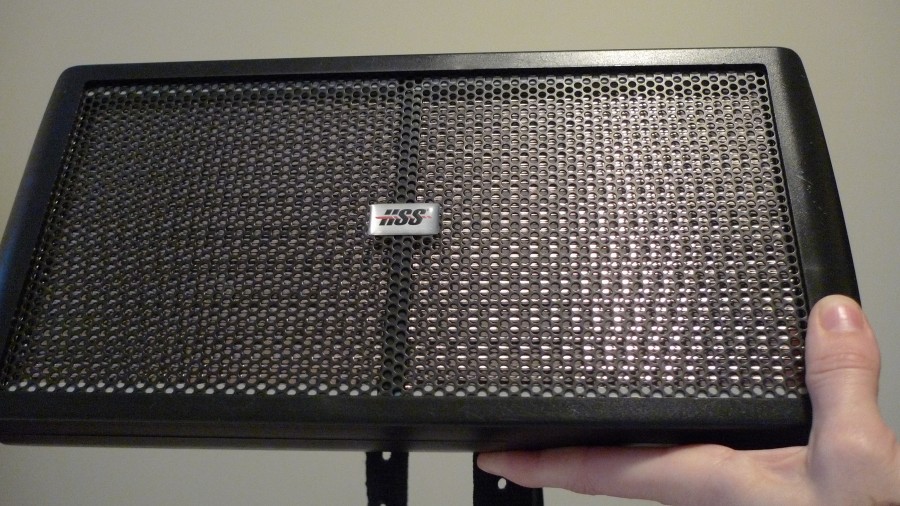
Hyper Sonic Sound (HSS)
Comments (0)
Hyper Sonic Sound: Halloween Experiments
The only time it is ethical to experiment on your neighbors is during Halloween …
Comments (0)
HSS Portability …
It took many attempts to make the HSS portable. Concerns about weight, power, visibility were hard to juggle. I h ad many advisors on this: old neighbors, friends, artists, camera crew people, electrical engineers, enthusiastic home depot folks who wanted a break, boat supplier and auto zone, and wound up solving it at this surreal electronic shop called “You Do It Electronics”.
The first set up below didn’t work. But eventually bought a 12V DC – that did. Wound up fashioning it to look like a power box – since I was worried about taking batteries on a plane – etc. We got through the airport and customs easily. I embarrassingly and needlessly worried about this for months! If only I recorded the conversations. People either told me to relax or that it was likely I wouldn’t be able to take my equipment on the plane – or worse! Fortunately getting through the airport was much easier than I anticipated. They had a randomized red light/green light system regarding bag checks. I always got green … my partner and cameraman at COP16 always got red.
Comments (0)
Afterthoughts: post Cop16
My lack of conference accreditation and organizational support limited my accessibility in Cancun. I could only afford to go for a portion of the conference. Security was heavy in the entire hotel zone. The mix of touristy Cancun and the strong presence of Mexican military/police was an odd scene. I was surprised and a bit unnerved by the amount of machine guns. No one was allowed access to public transportation that went anywhere near the main convention center without accreditation and in some areas men with guns were spaced about 20 ft from each other as far as the eye could see – sometimes even camouflaged in the bushes. The official venue was at a hotel resort called Moon Palace and most protesters without passes just lines the streets at Cancun Messe where an expo was taking place. To stay at the Moon Palace you needed to either be a delegate or have a official letter from your government.
Ten years is a long time. COP 6 was a different animal logistically from COP16 in many ways. Sadly many of the discussion points however are the same. I’m still processing the ways in which these conferences now function. Protesters, delegates, businessman seemed to me existed in separate bubbles.
Given that I was more interested in catching people in off moments. I decided it wasn’t worthwhile to be amongst the protesters given my project. Through a lot of trial an error (including behaving like a sound paparazzi) I was able to get access to some side events. My experiments were limited to side events such as Forest Day, Climate Village, and stalking in the hotel zone/various hotels, at bodegas, the street, and outside the World Climate Summit at the Ritz Carlton. Due to security at these events and in the street it was often hard to get video of my experiments. Most of the men with machine guns did not take kindly to having a camera in the vicinity.
I knew going alone without the support of an organization would make things harder for me in terms of opportunities and access to larger audience but I had no idea how tight security would really be…
Comments (0)
Words from Unseen Lips
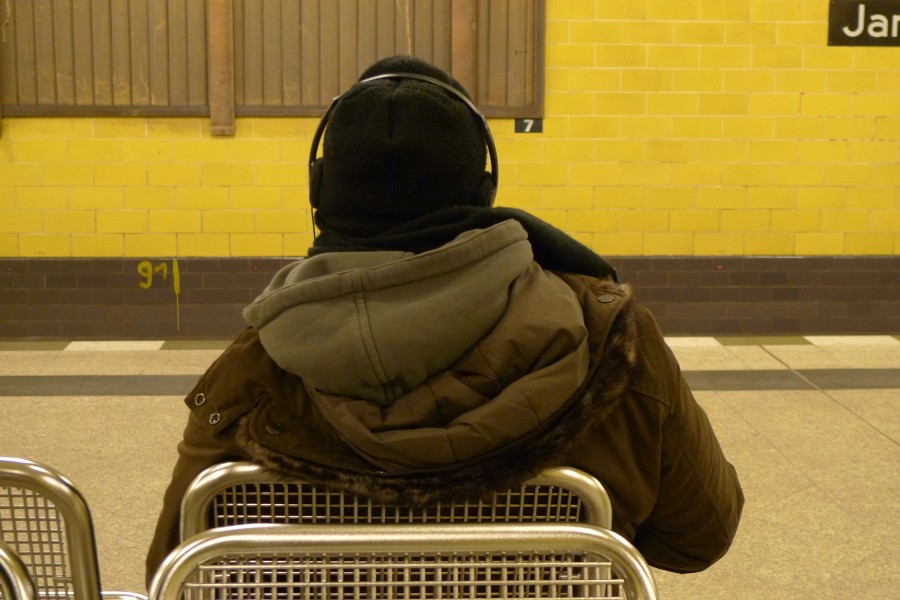
If we associate personal experience with what we hear then those unexpected sounds take on figurative existence. Sounds conceptually become creative interpreters when we transform sonic material into personally or socially significant. Interpellation is what happens when individuals identify themselves as the recipients or subjects of a perceived message. Sound and voice combine and take on internal conceptual existence that then influences our behavior.
Subversive Sound
Manipulative … that is a word that others have used to describe Interpelled. This link was passed on to me by a fellow subversive and good friend. The video is about contextual hacking. While Johannes Grenzfurthner’s examples are not specifically related to sound — they are to sense. Truly subversive art addresses societal controls and stop signs that exist in our heads. What he said resonated with me – especially in the wake of some of the fearful reactions I encountered with my own work.
In January, I presented Interpelled and received a lot of mixed reactions. Confusion, fear of physical harm, and the idea that I was trying to control people’s minds spread quickly across the room. I had opted to use the presentation time in a more experimental way and so I think some of the reactions I received were due to the unknown technology, the nature of the project (conceptual sound intervention), and group dynamics, but I was still quite surprised by the reactions. The most charged responses came from those who seemed troubled or fearful of the technology and/or by the idea that I wanted to create work that functioned like a conscience might. Some accused me of wanting to control people while others expressed they were disturbed by the activist context I was going to be using it in. Many present felt that the nature of projected sound took away people’s choice- – while a few others chimed in support of the project’s intention and execution. My ethics and aesthetics were brought into question. Obviously, conversations like these weren’t sparked by my colleagues choice of medium or technology such as drawing or video. It felt like I started a wildfire. What was noteworthy was that despite my description of how the project was experienced at COP16, people in the room remained either fearful or confused by the work. The mere description of the project seemed to cause a form of conceptual hearing in itself. Some claimed I was trying to tell people what to think and even when I corrected them, they seemed unable to get it out of their head. Which led me to the question, how is what I’m doing different from those who use signage to get a message across? But more to the point, why the wildly different reaction to sound as the medium as opposed to an image?
With hindsight, I believe my colleagues and the faculty understood the difference between message and voice, but could not articulate it at the time. My tactic did more than convey a message as a sign would, it presented itself as a voice and a way to create space. Whether using this tactic is, as they were concerned, unethical or manipulative is still up for debate, but has not been true in my experience.
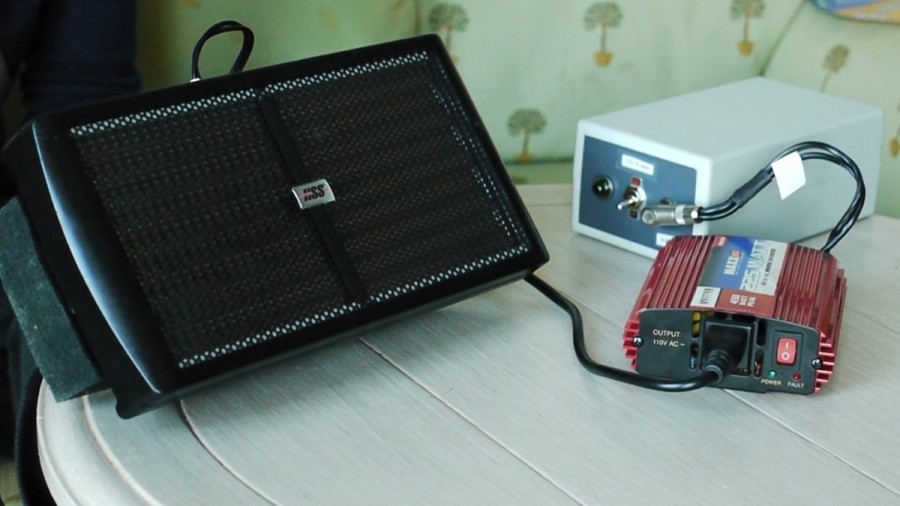
poetic intervention, artistic investigation, phenomenological research
The truth is, I had absolutely no interest in telling people what to do at COP16. Sure, I would love for the US to recognize their responsibility and do something concrete about it– I would like to see many things change in this world. But when something doesn’t work it’s time to get creative and approach the problem from another angle. Shouting chants or hanging oversized banners for delegates to (maybe) read is not effective activism anymore. Rhetoric and clever signage at political events was once innovative, but is now commonplace, easy to ignore, and arguably ineffective. Direct action has always succeeded when it plays on the unexpected to achieve results. Effective activism today requires innovation, new strategies and tactics, and experimentation. Effective art plays with expectation, interrupts, and challenges the way we think. And art at its best speaks to the soul and inspires reflection. Interpelled aimed for all of that at COP16 by venturing to expand ‘reality’ through the creative use of sound and gesture.
This prompted me to explore the idea of fear and sound – both as a research data point but also since I felt I needed a way to understand these reactions on a deeper level if I was going to be able to shift the dialogue to a more constructive place.
Working creatively with a technology that most people don’t know exists but that inherently plays with people’s expectations and perceptual reality is not easy. Often I found when I explained the project it took people some time to imagine positive possibilities of any technology originating from the military.
Reactions to using an HSS device at COP16 varied greatly. When I told colleagues of the project, responses ranged from a delighted sort of wonder to a deeply disturbed confusion – and I understand there are many complex reasons for that. When I was trying to illicit help and initially get organizational support for the project responses were also mixed and often polarized. Some questioned my ethics and others were excited and asked to be kept in the loop as to the outcome of the action. Most common were people who viewed this use of sound as “intense.” Artists, activists, and environmentally concerned citizens most easily realized the potential of using this device in a way that was poetic yet political. Sometimes those who understood my intentions still felt uncomfortable with some aspect of the work. Working on this project I began to realize that it brought up skepticism and fear. Fear especially is a hard thing for people to acknowledge let alone talk comfortably about.
Comments (0)
turning the concept on yourself …
In an attempt to understand the fear Interpelled was kicking up … I made a few video sketches …inspired by Steve Martin.
[flv]https://victoriaestok.com/wp-content/video/enter-your-head-wo.m4v[/flv]
[flv]https://victoriaestok.com/wp-content/video/theres-a-buzzing-in-my-head.m4v[/flv]
[flv]https://victoriaestok.com/wp-content/video/the-voice-of-steve-martin.m4v[/flv]
Comments (0)
Limits of the Eyes
How well can you remember sounds? Take a moment and think about the sounds that registered with you today. Try to remember the last thing you heard before falling asleep and what you heard when you woke up. It’s likely harder than you initially think. That’s because our daily lives are layered, complex, conglomerates of sound. For most people sounds trigger memories, shift in moods, or a heighten states of awareness. Sound permeates boundaries and inherently invokes doubt because hearing takes more work than other sense modalities. What we hear incorporates both identifiable objects and unseen forces. Sound’s seeping qualities make it hard to contain, locate, an identify with certainty. Mindful listening takes practice and the elusive qualities of sound only compound this challenge.
As difficult as it may be to remember sounds from today there are, however, instances when we overhear something seemingly insignificant and it makes a lasting impression. The absence of a sound such as the disappearance of traffic from a busy intersection could cause pause and a momentary shift in consciousness. The tone your lover has when they mention someone’s name to the emergence of insect sounds may be “insignificant” examples that cause you to refocus your attention. We are acutely aware that we listening to something that is outside ourselves and yet seemingly this “other” speaks to use and the meanings we attach to what we hear are just for us. But what is it that suspends preconceptions and causes reflection? What exactly is resonating with the listener? Who is calling and what is being conveyed?
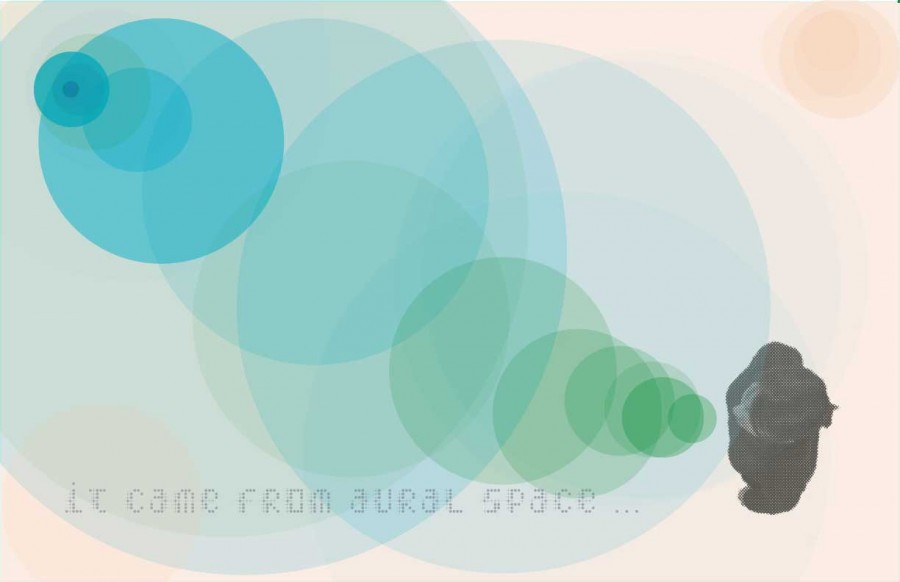
Comments (0)
ear worms, mosquitos, and sonic force …
Vibrational force: The current intersection of sound research and aesthetic experimentation puts us in a very interesting time ‘sonically’ speaking. Artists, advertisers, educators, and everyday people all have access to audio technologies that have creatively redefined public and private space. Everyday we use a myriad of devices to communicate our thoughts and connect with each other. Interestingly, the development of these technologies was not driven by a desire to communicate but rather a desire to manage populations, control space, and gain military advantage. The ways in which sound has been conceptualized says many things about the concerns of a culture.
Governments often use sound to subdue the public and regulate order while advertisers use sound to influence the market by playing upon perceived desires. Steve Goodman examines what he calls the politics of frequency in his blog particularly how sonic weaponry has been used by the military and police use to control populations and perceptions of reality.
The US Military treads ethically questionable territory especially when it comes to their employment of sonic weaponry. Beyond the more popularly known examples in the media of the US Military blasting popular music at prisoners in Abu Ghraib, today the military conducts extensive research in virtual soundscapes, infrasonic frequencies, and directional sound lasers to gain advantage over the imagined enemy.
Political power extends when loud speakers and other transmission devices amplify voice. One of my favorite models of the public using audio to amplify collective voice and reclaim political independence is Estonia’s Singing Revolution of the late 1980’s. Even though Estonia was under Soviet occupation for decades, and the singing of traditional Estonian folk songs were banned under this regime, Estonians joined in a peaceful protest through song. Demanding independence, hundreds of thousands of Estonians organized calm but impassioned massive singing demonstrations over a handful of years that eventually led to their independence.
Well crafted audio can increase the perception that an authoritarian voice is speaking directly to you. Interpellation was fortified by the development of audio technologies which lent power not only to political and commercial endeavors but also the voice of fiction. There were a couple examples of radiophonic panic that seized the American and Ecuadorian imagination … and what immediately comes to mind is the highly controversial and fairly recent release of “The Mosquito” as an example of how an ultrasonic devices can be simultaneously used to fashion a new perception of reality and undermine human rights. This device is able to mess with equilibrium because it is our ability to determine the directionality of a sound source which grounds us in space and helps establish our sense of balance. In this way, The Mosquito is one example of a broader idea: when we are unable to figure out where a sound is coming from a certain anxiety starts to build. Changes in volume and frequency affect our sense of physical and psychological security.
Conceptual Hearing
Hearing is more complex than just the mechanics of our ears. What we hear and how we hear is mediated by culture, ethics, psychological history, and our neurobiological make-up. Quickly, through hearing, we can access what is intriguing, safe, inviting, dangerous, and reasonable. We are hardwired to make split second decisions based on our ability to interpret information acquired through hearing. The success of our species is no doubt partially due to this kind of neurobiological relay.
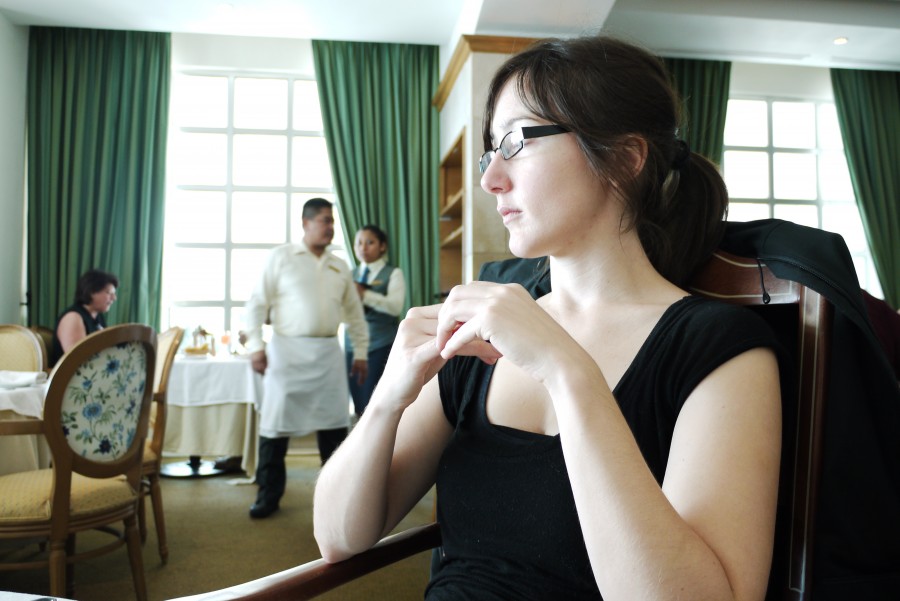
Let’s take a moment and analyze hearing. Physical hearing is the pressure of airwaves on our eardrums, but it is as instinctual as it is corporeal. The ability to detect external sounds involves a bodily interaction with the world that is both conceptual and physical. Conceptual hearing exists internally; it is a private process where imagination, intuition, and intellect dialogue. Unlike physical hearing, ideology and our psychology frame our interpretation of sound – this is what differentiates conceptual hearing. So what we physically hear and what we internally or conceptually hear are not always the same things. Complex associations develop whenever physical hearing blends with conceptual hearing. Suddenly a voice within the sound calls to us. This phenomenological distinction between the two types of hearing, however, does not diminish the affect of the heard voice on the listener. Auditory perception is further complicated by the fact that we often hear things that we don’t see. Ephemeral and temporal, unless the sound we hear registers as close, we often perceive sound as neither here nor there but everywhere.
Comments (0)
inviting us in …
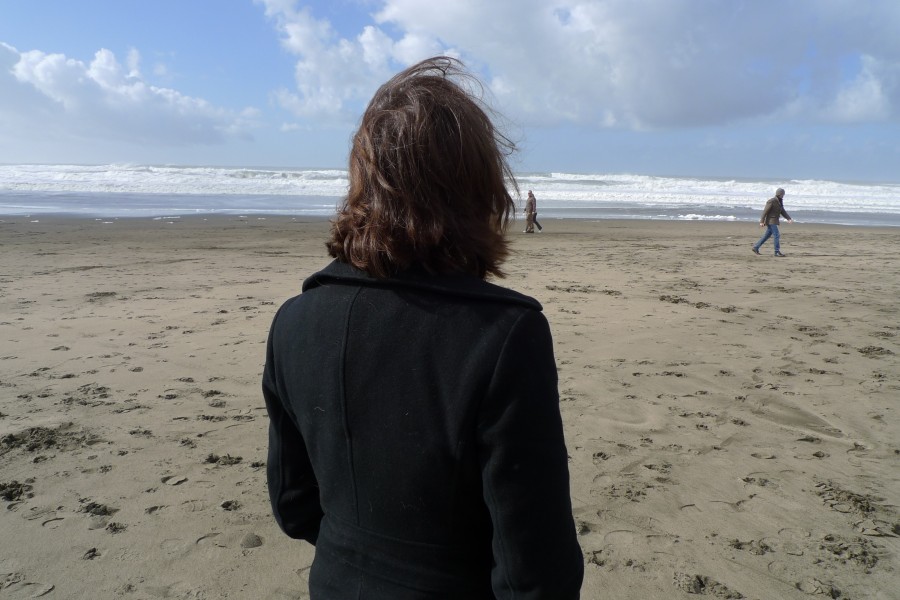
Sound invites us to respond just as questions do. When we hear a voice or a peculiar sound we instinctively respond and our ears zero in. Hearing is unique sense modality because sounds speak directly to our emotions and reflect our personalities – choice exists in listening much more than, for example, smell. We tune in or out to sounds and what we wind up tuning into says something about us personally. This is specifically true if what we hear catches us off guard and exceeds our expectations of the situation or location. Whether we decide to investigate this overheard source says something about ourselves too. In unexpected resonating moments we experience a heightened sense of awareness. Sound and voice collide in a way we can perceive. We identify inflections, interpret hesitations, and sense mood shifts by attributing meaning to the spaces between words as much as the words themselves. Dimension is added to perception when we tune in and listen; understanding deepens and questions arise.
Comments (0)
Protected: Project Correspondences
Enter your password to view comments.
Voice …
Voice is a paradox, for it can motivate or paralyze its listener. Captivating speeches, heartfelt stories, and evocative audio work grab our attention and challenge the way we think and feel, moving us to act or stopping us dead in our tracks. Sounds enter our consciousness and provide a structure for interaction. Voices validate and punctuate our existence. Sounds of swarming starlings signal seasonal change in audible black clouds every spring and autumn. Cautionary parental voices are resurrected from memory intervening during moments of indecision or transition. Even our cell phone, whether ringing or not, speaks to us when we are longing to hear from someone. Sometimes these sounds are just a sound. Other times what we physically hear becomes internally significant – sounds that become more than a sound, take root in our minds, and become voice.
Comments (0)
Reflecting their own words back to them …
What was good for the project may not have been so good for my mental health. I spent the weeks before the conference listening to ten years worth of archived climate conference meetings. I recorded audio from past conferences that I found moving. I edited those statements and sentiments to their essence. My plan was if the opportunity presented itself and I had a longer time to project sounds I wanted to reflect COP attendees own words from the past ten years back onto them. Like the Ghost of Christmas Past I speak to the passing of time. I didn’t need to make outright statements of my own. By presenting the past to an unsuspecting COP16 conference attendee, the listener would come to their own conclusion.
Some of their own words from the past ten years …
Longer audio clips from the past ten years …
For the patient and ambitious or crazy more audio to be found below …
or you can take listen to UNFCC Climate talks
settle in and listen to their speeches and statements
if you’re feeling very energetic and willing to listen — maybe you’ll try the UNFCC News Archive
or radio yourself!
Comments (0)
creative sonic activism
Pardon the visual metaphor … but people need a portal. People don’t pay attention to cliche. They are pulled out through affect. When choosing the audio – I didn’t want there to be this take it/reject it moment that happens with most activism. The same goes for most political art — it reflects a world people don’t want to look at. I wanted to create something that was open enough so that the listener/audience can make sense of it on their own. Feeling is very important for culture shifts … and I wanted my listeners with Interpelled to enter a dimension of mystery.
Imagine you’re enveloped by this when you leave a late night meeting
or on your way to the hotel bar
you just gave a greenwashing pitch about your corporation
maybe you’re a denier and thinking about money
Comments (0)
one-on-one-intervention
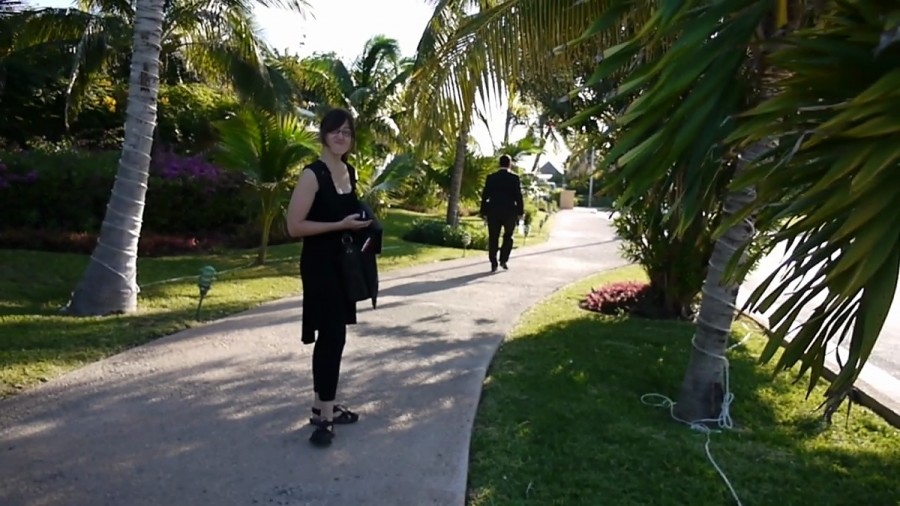
The banner hangs, protests, scripted and shouted chants seemed almost destined to go unnoticed by those who attend these conferences because they fit in the paradigm. When I was a budding activist ten years ago I participated in those actions at a COP 6 in the Hague. I was struck that our efforts, chants, and words seemingly were ignored. I realized measures activists often take at these events tend to be less about opening up space for innovative solutions and more about dogging, pressuring, and guilting officials in the hope of achieving concrete results. After learning more about Hyper Sonic Sound I wondered if I could break through this scripted blanket and inspire a different type of reaction and reflection. I certainly did not want my project to be experienced as more rhetoric. I didn’t want to project statistics at delegates or make a cute clever rhymes about the planet’s destruction. I wanted conference attendees to pause and deeply listen. I knew I needed to be careful and considerate for my work to function as an inner mirror in this context. To be effective, there were logistical restraints I needed to consider. I thought about how hurried and crazed these ten-day conferences can be. I knew most of the attendees would be sleep deprived and I wanted to respect what I imagined to be their semi-frazzled mental states. The sounds needed to be recognizable to an international population. The audio had to be something consistent, simple, and yet poignant. Imagining this as a conscience speaking, I knew I needed to access each conference attendee singularly – this was going to be a one on one intervention.
Comments (0)
meetings go late into the night …
I wanted this to be a moment for the attendees to reconsider what is important and inspire an inner dialogue that would reverberate even after the conference ended.There were technological and time restraints as well. Keeping in mind the frequency requirements of the HSS, I limited my audio material to the human voice. During my experiments pre-conference I tested a variety of sounds. Uncertain of accessibility, I had no idea how long I would have with my targets so I thought about sounds that would translate if heard only for a few seconds. There were many variables to account for. I had to plan around the possibility of only having about ten-seconds with people. I tried to think of how snippets of constrained audio could create space while communicating context. I wanted the idea of the work and the sound to take root both with people who experienced the intervention first hand and those who heard about it second hand or through documentation. Since memes function in a contagious way I thought about using a meme for the audio material. I thought about how confusion and excitement around the project itself seemed contagious and unwieldy and how I could leverage it. More than anything I wanted the sounds to create an opening and ultimately be heard.
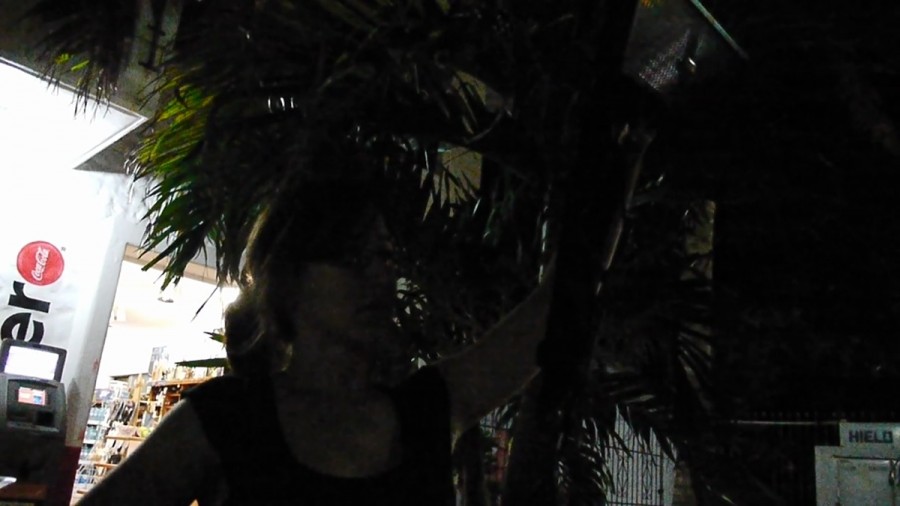
meetings go late into the night ...
Comments (0)
Ten years later … still troubled by the same things
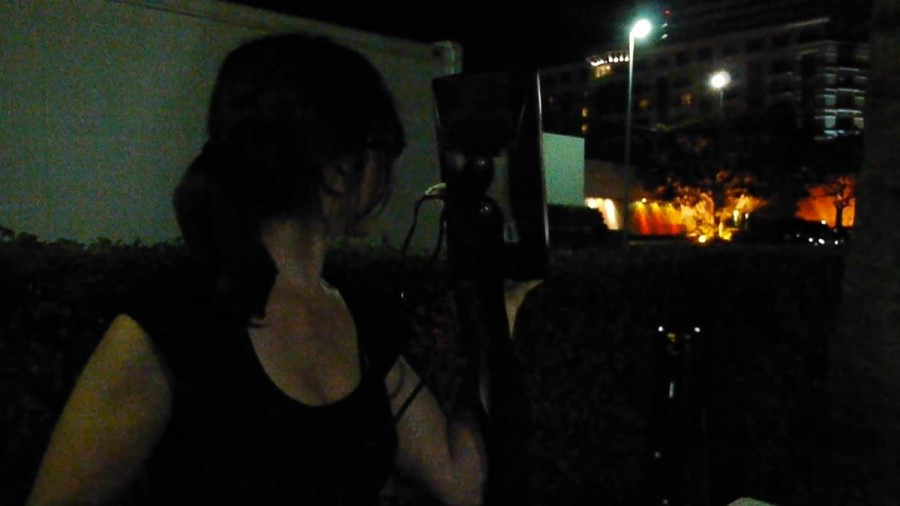
ten years later ... still troubled by the same things
There were moments during this process when the whole project felt too big and I worried if I would ever find the right sounds. Then I began to think about the kinds of sounds that I find emotionally resonate. Beyond words, what sounds would be symbolic and contextually appropriate? And then one night it came to me as I was walking downtown. Passing me in a car the brief sound of children’s voices jolted me out of my train of thought. Their young laughing voices were clearly recognizable even though I only heard them briefly. I realized, in that moment, that the voices of playing children translates no matter what your nationality and was both a sound and a voice that speaks to the heart. Under the looming climate crisis, projecting the joyous voices of children laughing and playing at COP16 resonated both intellectually and emotionally.
Comments (0)
challenging thought
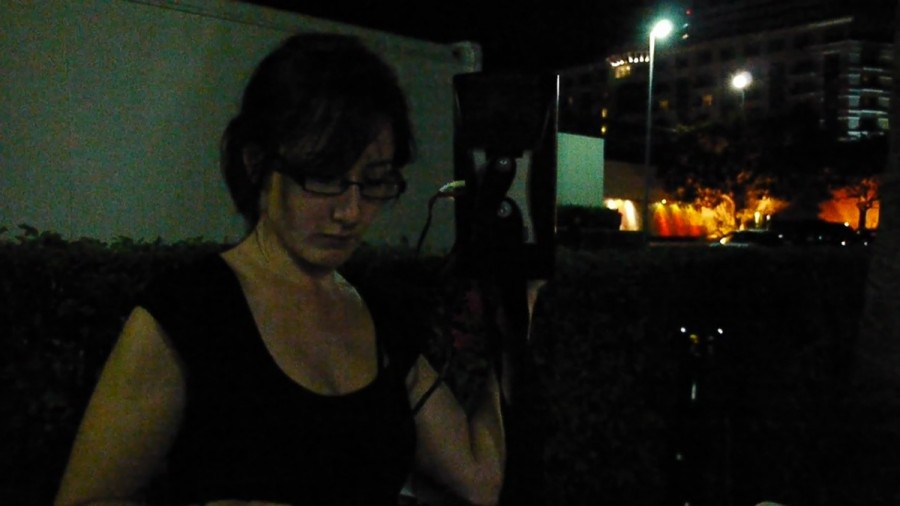
challenging thought
When using sound as a creative form of activism interpellation also beckons the listener to respond. This response was something I considered when I imagined the Interpelled project functioning as a conscience at COP16. When using sound as a medium, ethical implications are increased especially when dealing with the possibility that someone will hear the sounds as if they were originating from their own body. My sonic intervention had a couple of trajectory points. The first came from a desire to do something with the haunting climate crisis voices in my mind that whisper to me that time is running out. The second was to create a reflective space through sound for COP16 attendees to reflect on the core issues and what’s at stake. When the work resonates, conference attendees will experience a contemplative moment challenging them to engage in more meaningful dialogue around these issues in a conference environment and in their own lives and people who experience the documentation of the project will also be challenged to think in new ways.
Comments (0)
Inconspicuous
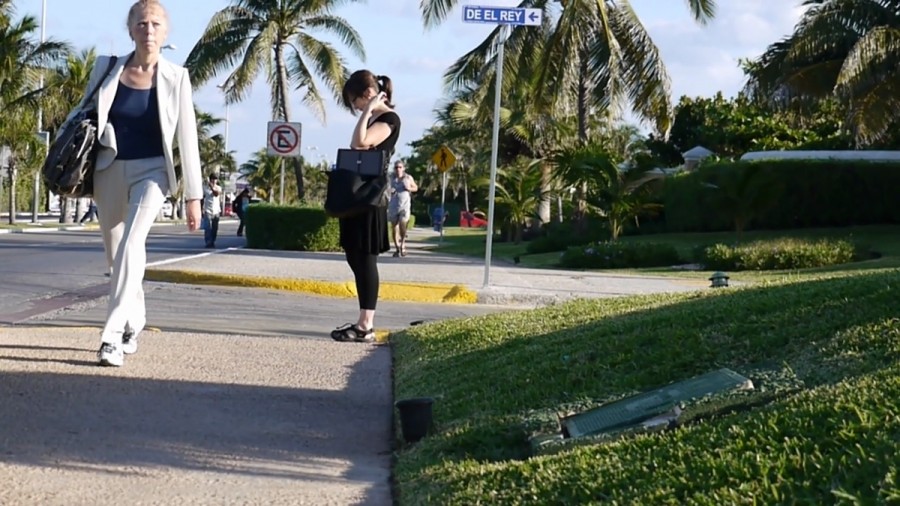
Inconspicuous
Choosing audio material for the sound intervention at COP16 was challenging for this reason. For a sound work to speak, it literally has to call to and connect to the listener’s headspace. Conceptually I wanted the sound to be situation specific, personally, and socially significant. I wanted my audio material to be heard as neutral and positive but I also felt that the sounds should be a poignant reminder of passing time. Interpelled plays with interpellation on many levels. Troubled by questions of morality in the face of the climate crisis Interpelled arose from my own calling. A haunting nagging voice about passing time inspired me to think about how I might creatively use sound to inspire reflection and dialogue around what I considered to be the worlds most pressing issue. I felt compelled to try to use audio in a novel and personal way so that a conference attendee would hear the work as if it was the voice of his or her conscience speaking. I imagined Interpelled expanding and challenging the consciousness of the listener …
Comments (0)
On the ground
Slide Show
- no problems at the airport
- Anyone on this site no one can use public transportation. Security is that tight! The police do not want any overt photos taken. Had to travel by car to events at a distance. We were routinely stopped.
- Guns Everywhere
- In a city that defines unsustainable
- without accrediation you can side access side events
- Lobbies prove another testing ground
- Forest Day Talks …
Comments (0)
no ‘ah-ha’ moment
Imagining how a sound might be perceived is not an easy task and this is a challenge sound artists face when making work that is contextual and situation specific rather than work that is spatially or algorithmically motivated. In my experiments and especially at COP16 I hoped to be able to detect when someone heard or felt the beam of sound hit his or her body. The reality wasn’t that simple. In most cases there wasn’t a recognizable ‘ah-ha moment.’
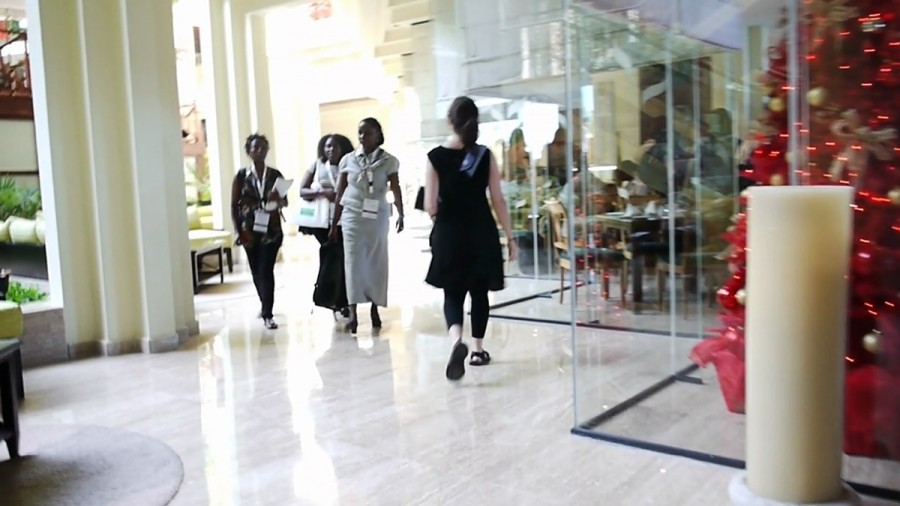
no ' ah- ha' moment
Interestingly though, working on this project encouraged me to enter into a deeper dialogue with myself. I went into my own head and began to equate the climate crisis with a crisis in morality. I began to wonder what a significant opening of internal space through sound could look like and what would be the ripple effect. I recalled things I remembered hearing years ago but didn’t seem particularly all that significant when I first heard them. We hear and remember what we hear because we perceive it as emotionally significant. What we hear affects the way we participate in our environments. This led me to start wondering what happens when the way in which we hear the world shifts and how does this have an impact on our lives?
